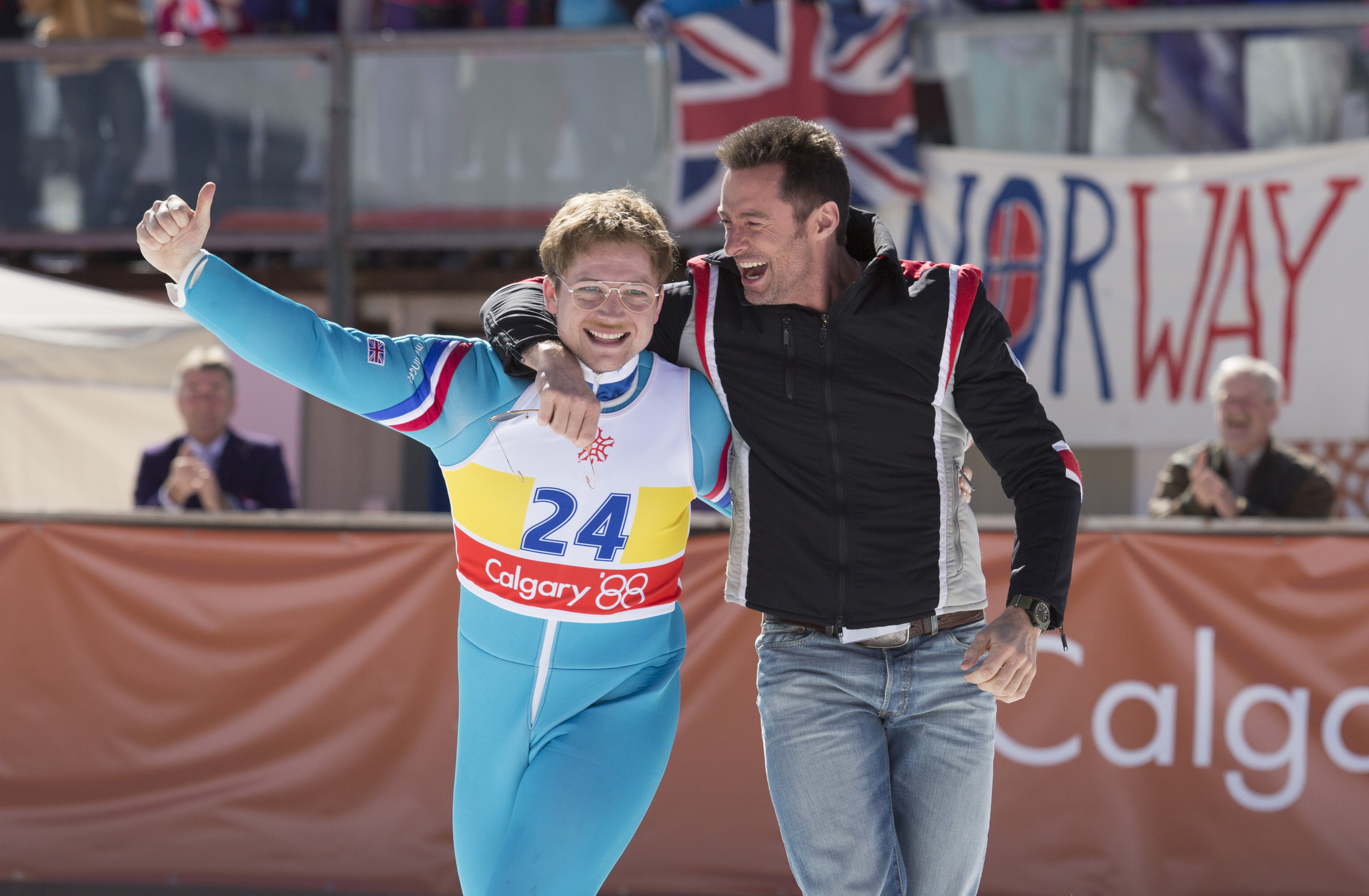
‘Eddie The Eagle’: Shoot And Grade Story
Posted on Feb 29, 2016 by Alex Fice
Out in UK cinemas on the 28th of March, Eddie the Eagle stars Taron Egerton (Kingsman: The Secret Service) in the role of Eddie as he goes from his childhood dream of entering the Olympics to his struggles training for a professional ski jumping future with the help of coach Bronson Peary, played by Hugh Jackman.
Creating the grade for the film were director Dexter Fletcher’s longtime collaborators, DoP George Richmond and Goldcrest Post London based colourist Rob Pizzey, who used DaVinci Resolve.
Filming like Family
“I’ve worked with George and Dexter on a number of films now, and Joshua Callis-Smith, the digital imaging technician (DIT), actually only lives down the road from me! We’re all friends, which made for an ideal working relationship,” begins Pizzey.
He reveals that knowing Richmond would be the cinematographer for the movie was one of the reasons the film appealed to him as a colourist. “The way George has shot the ski jumps is unbelievable,” he continues. “Just imagine an actor carrying out a ski jump and the audience is actually with him in the air.”
“The way we approached filming Eddie the Eagle was to first test an array of different cameras in the snow, using the Alexa as the benchmark look,” explains Richmond. “We needed to select smaller cameras that weren’t too bulky to minimise any risk to the skiers jumping with them, whilst also making sure to pick a camera that would provide us with a great performance. What we ended up choosing was the 2KSDI Flare, which had a little more weight but recorded in RAW onto an Odyssey Q7 external recorder, which is basically a completely flat seven inch monitor that could easily be mounted onto the bodies of the ski jumpers.”
Using the smaller camera, however, brought the team several challenges when it came to post production. “Due to their narrower latitude, smaller cameras just don’t see as many colours as something like the Alexa does, which made it much harder to make all the shots fit well together later in the grade. We needed to employ all sorts of tricks to make sure every skin tone, costume, and parts of the background like the sky and snow all matched perfectly from one shot to the other,” tells Richmond.
“Luckily, Rob is a fantastic colourist, and you can learn to cheat the eye with DaVinci Resolve.”

Cheating the Eye
To enable every shot to perfectly match and more with DaVinci Resolve, the team began by experimenting with LUTs before taking the project into the final DI. “For ‘Kingsman’ we set lots of LUTs, but because Eddie the Eagle was shot on a much smaller budget, this time George only had one LUT and knew exactly how he wanted it to look,” remembers Pizzey. “When we started the DI, we had all the reels with the colour grading information they had used on set to help.”
Richmond and Pizzey also worked on a two day colour bible session to complete the grade, racing through the film setting quick looks to capture the mood for each scene. To Richmond, it was crucial to achieve a slightly period look for the film, set both in the seventies when Edwards was a child, and in the late eighties as he developed into a ski jumper. It was also important to introduce a slight difference between the two looks to reflect on the different time periods, which would be further emphasised by differences in camera behaviours and cinematography.
“I was left alone for a week, and just matched the film to all of the stills we’d made,” Pizzey explains. “Dealing with the cameras and jump sequences involved a lot of intricate keying and shape work that we needed to animate to make sure every shot had the same feel and mood, even with completely different cameras.”

Despite all these difficulties, for Pizzey the most challenging aspect of the work was not actually shot matching, but grading all the snow involved. “Grading snow is always a challenge. When it’s sunny, it’s really bright so it’s easy to clip out on the camera. It will end up being a block of solid white and you’ll lose all the details,” he tells. “Also, sometimes if you have very blue sky, it’ll reflect the colour in the snow which is tricky.”
“One of the things you find out when you research ski jumping is that previous films have already taken advantage of all the best angles, so making it seem fresh and new is very difficult, but I do believe we have all succeeded in making a movie with a difference,” concludes Richmond. “I remember watching some of the footage from the actual 1988 Olympics, and thinking how are we going to make a film about a guy who is failing, and make it exciting and interesting to everybody? But that’s the beauty of Eddie the Eagle, both in life and in film. You find yourself rooting for the underdog whether he wins or not.”













